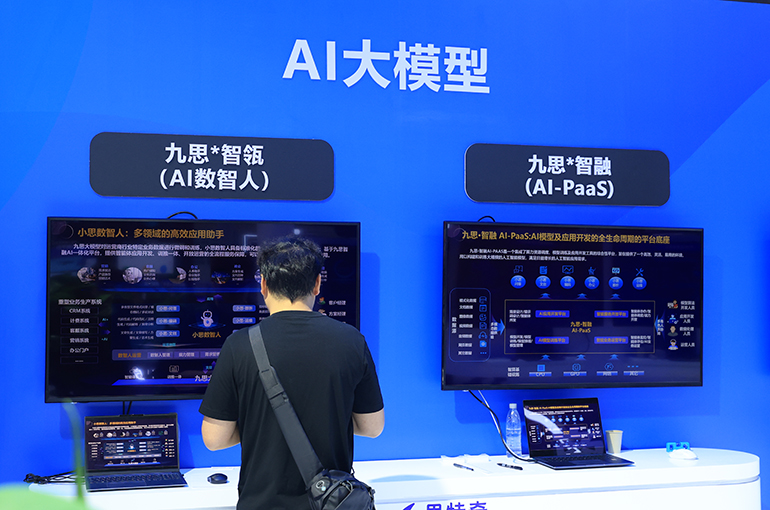 AliCloud, Other Chinese Internet Giants Cut AI Coding Model Prices to Attract Developers
AliCloud, Other Chinese Internet Giants Cut AI Coding Model Prices to Attract Developers(Yicai) July 25 -- Alibaba Cloud and other Chinese internet powerhouses have cut the average price of artificial intelligence coding models to about a fifth of their biggest foreign rivals, with an industry expert saying they aim to exchange short-term benefits for developer loyalty and long-term market share.
Alibaba Cloud announced a limited half price discount on its Qwen3-Coder on July 23, the same day that the cloud computing arm of Alibaba Group Holding launched the model. In addition, the release of Moonshot AI's Kimi K2, which excels in coding and agentic tasks, on July 11 led to the price of Chinese AI coding tools dropping to about CNY4 (55 US cents) for input and CNY16 (USD2.23) for output per million tokens.
These cuts take Chinese prices down to around one-fifth of the cost of Claude 4. Based on the Chinese yuan to US dollar exchange rate on July 24, the input price for the model developed by US AI startup Anthropic was CNY21.47 and the output was CNY107.36 (USD14.99) per million tokens.
With new pricing, Chinese vendors aim to quickly attract developers, foster habitual use, hasten ecosystem building, and get real‑world feedback to improve their products, Charlie Dai, vice president and chief analyst at US market research firm Forrester, told Yicai.
Although overseas companies took an early lead in the AI coding arena, investment fervor among Chinese counterparts has grown steadily grown. In addition to TikTok-owner ByteDance and Alibaba promoting such tools, improvements in foundational model capabilities and cost‑effectiveness are also driving the domestic sector’s growth.
Key battlegrounds for AI coding models include context length, agent-task capabilities, data quality, toolchain support capabilities, internal ecosystem integration within companies, user experience, multilingual support, and pricing, Dai noted.
The capabilities gap between Chinese and foreign tools is narrowing fast, Dai pointed out, adding that Chinese models are even on par with or surpassing international standards in some areas.
From an industry perspective, the commercialization prospects of AI coding models may develop rapidly. Chen Xin, who oversees Alibaba Cloud's smart coding assistance tool Tongyi Lingma, has said that the paid user adoption rate for such tools is around 10 percent to 20 percent.
The products have not yet reached a level where everyone feels the need to use them, with average efficiency gains ranging from 10 percent to 30 percent, according to Chen. But Chinese and overseas model development is moving ahead very fast, he said, adding that the adoption rate could reach 50 percent or 60 percent over the next six months and potentially 80 percent after another year.
With Chinese tech firms ramping up their activity in AI coding, it is crucial not only to lower prices but also to continuously enhance product capabilities, ensuring that cost-effectiveness translates into improved user experience. The field’s commercialization potential is growing by the day.
Editor: Martin Kadiev